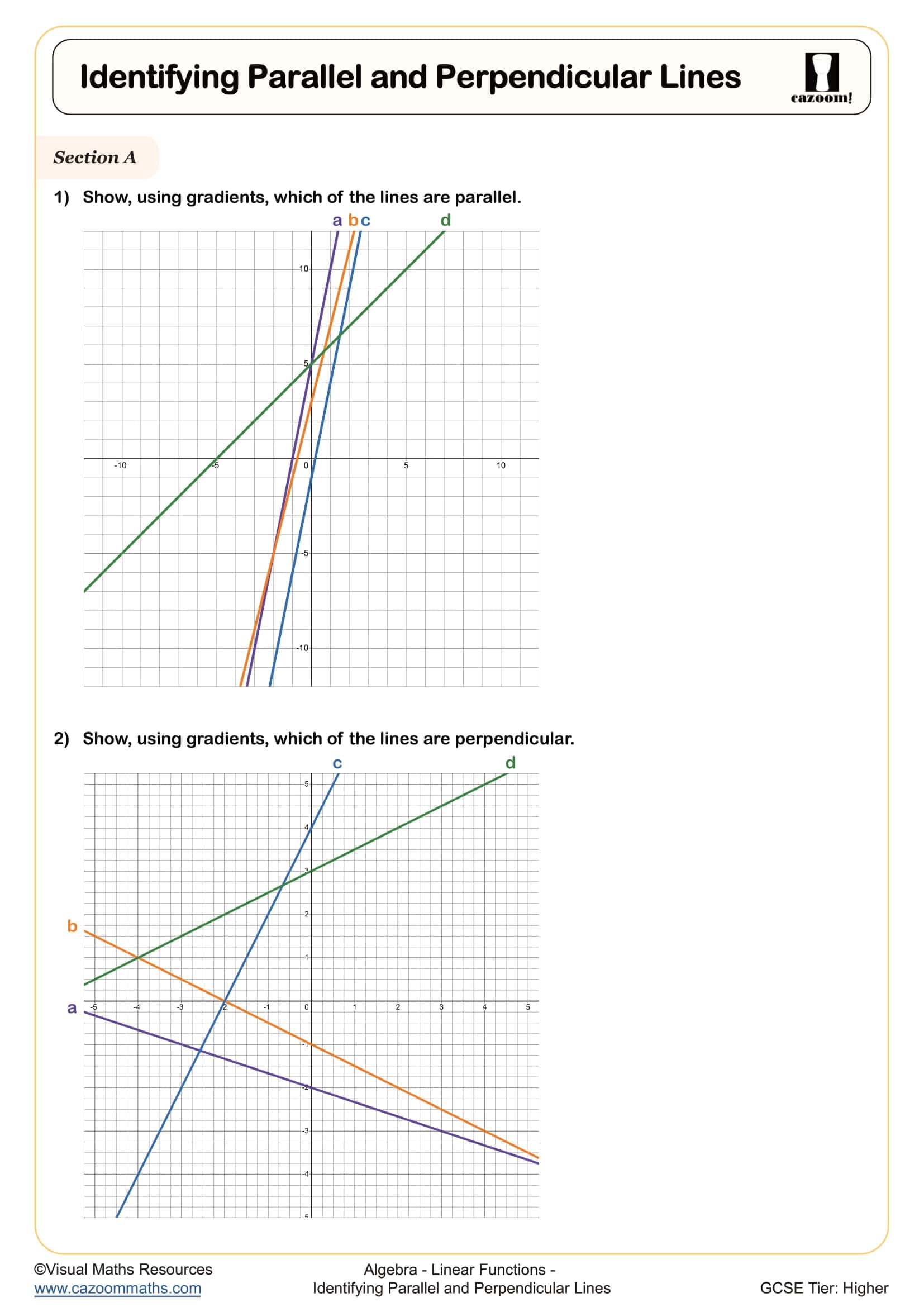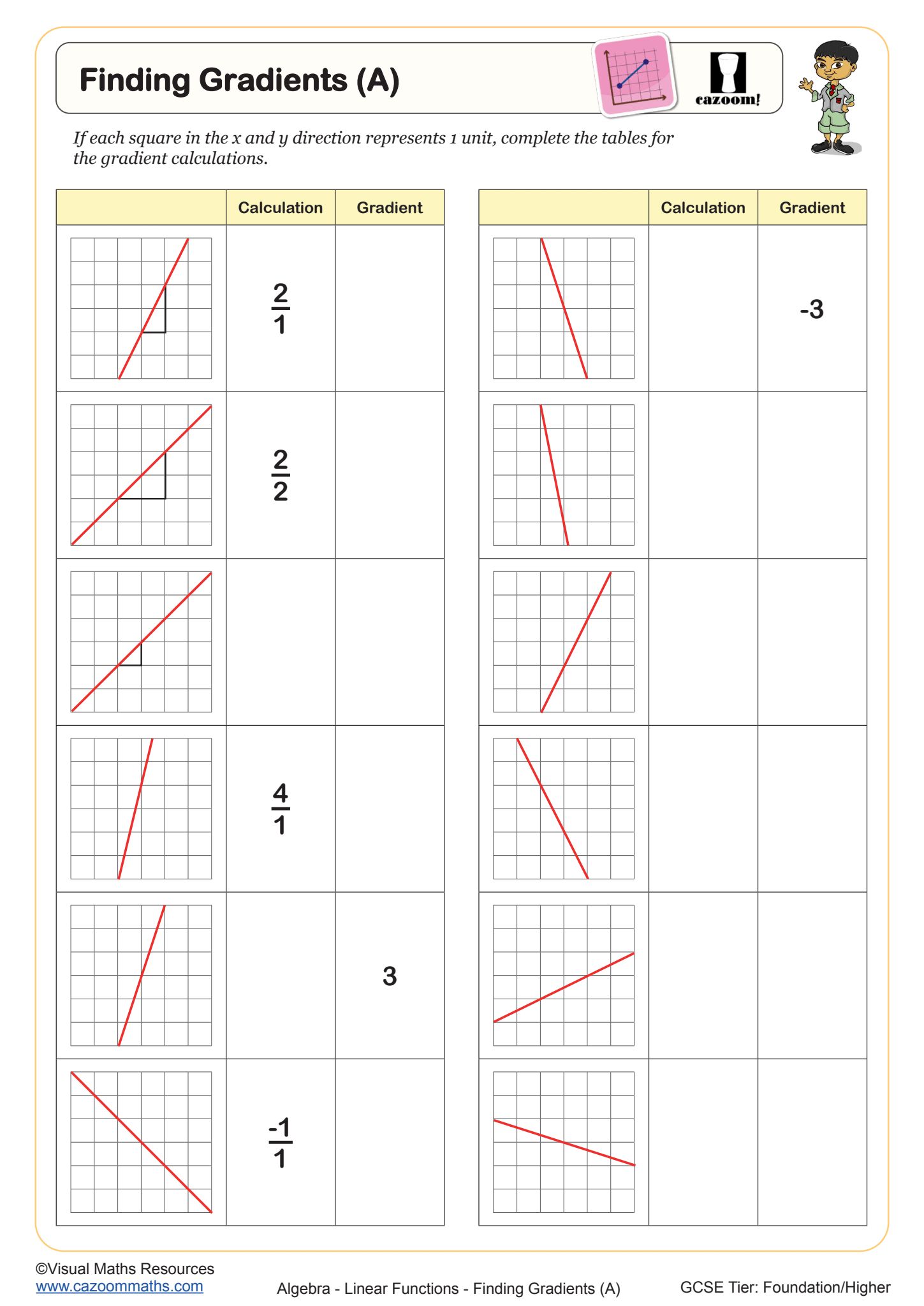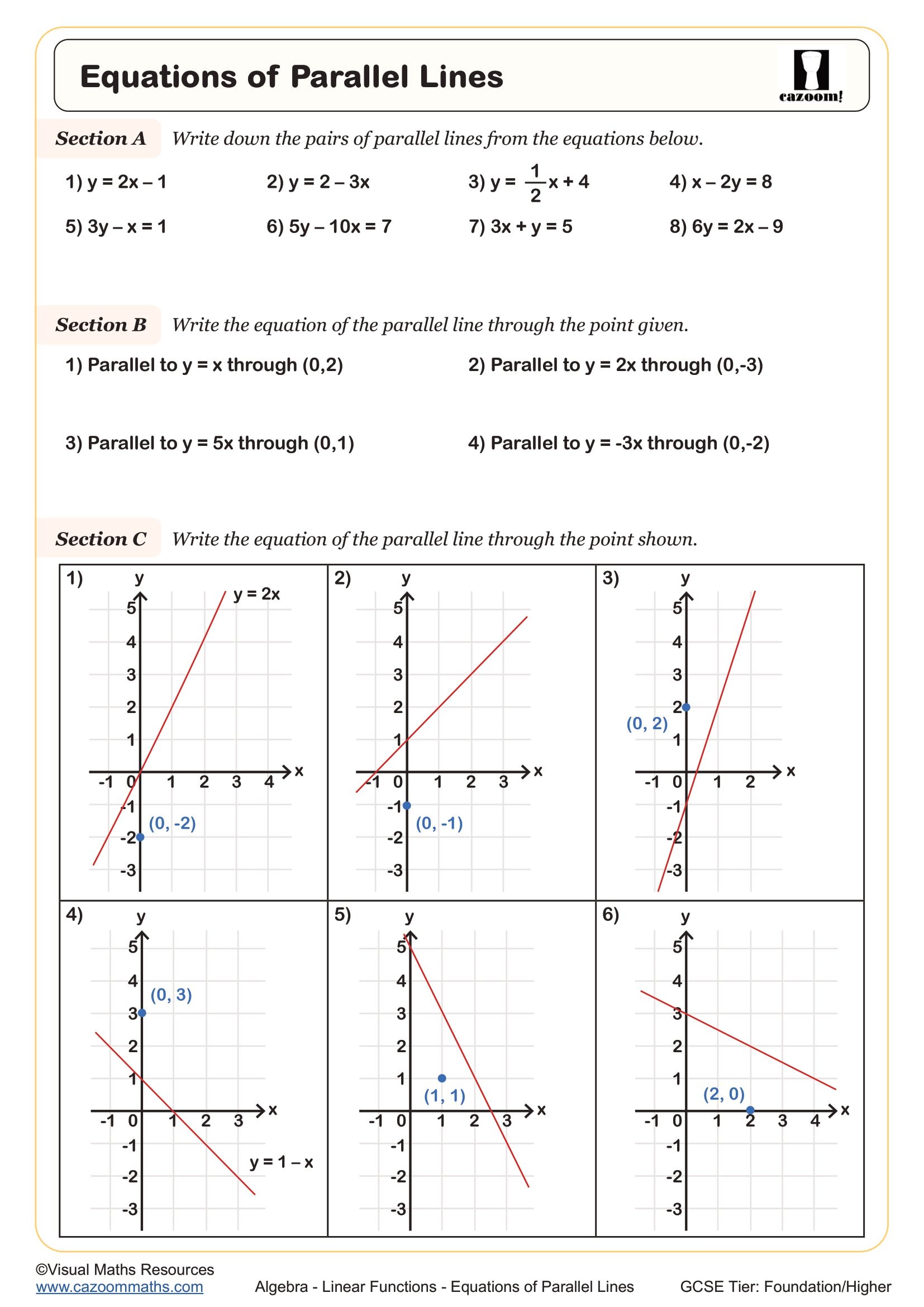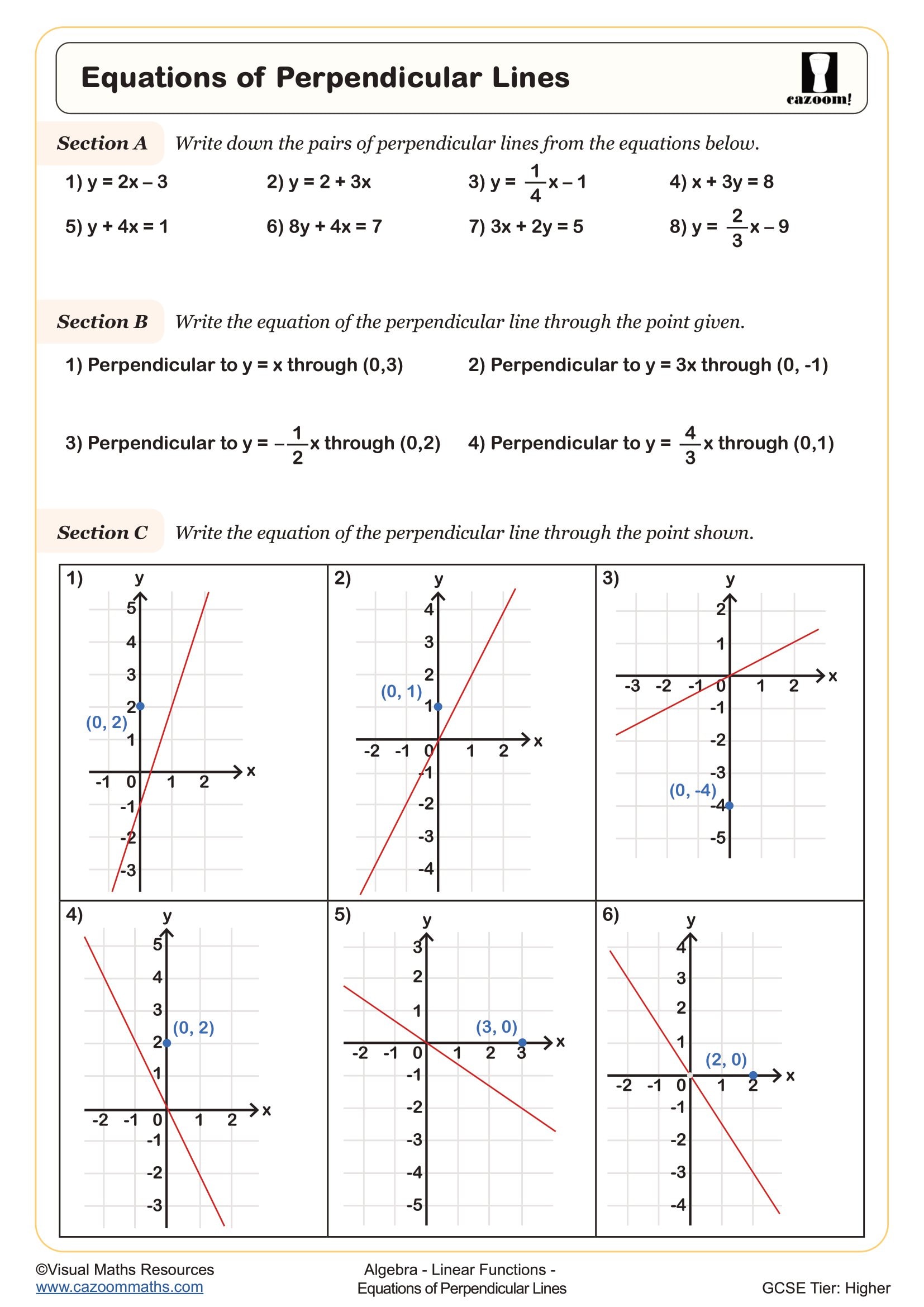Identifying Parallel and Perpendicular Lines WORKSHEET
Identifying Parallel and Perpendicular Lines WORKSHEET DESCRIPTION
This worksheet challenges students to identify parallel and perpendicular lines using gradients, reinforcing key concepts from algebra and coordinate geometry.
In Section A, students examine line graphs and calculate gradients to determine which lines are parallel and which are perpendicular—this sharpens their understanding of slope relationships and strengthens visual interpretation of graphs.
Section B progresses to coordinate geometry problems, where students apply their knowledge of gradients to prove geometric properties. They must determine whether a given quadrilateral is a parallelogram, check if a triangle includes a right angle, and decide whether a quadrilateral is a rectangle—all using coordinates. These problems develop reasoning, proof, and spatial awareness.
Ideal for GCSE Higher students, the worksheet promotes deeper conceptual understanding and fluency with gradients and line relationships.




